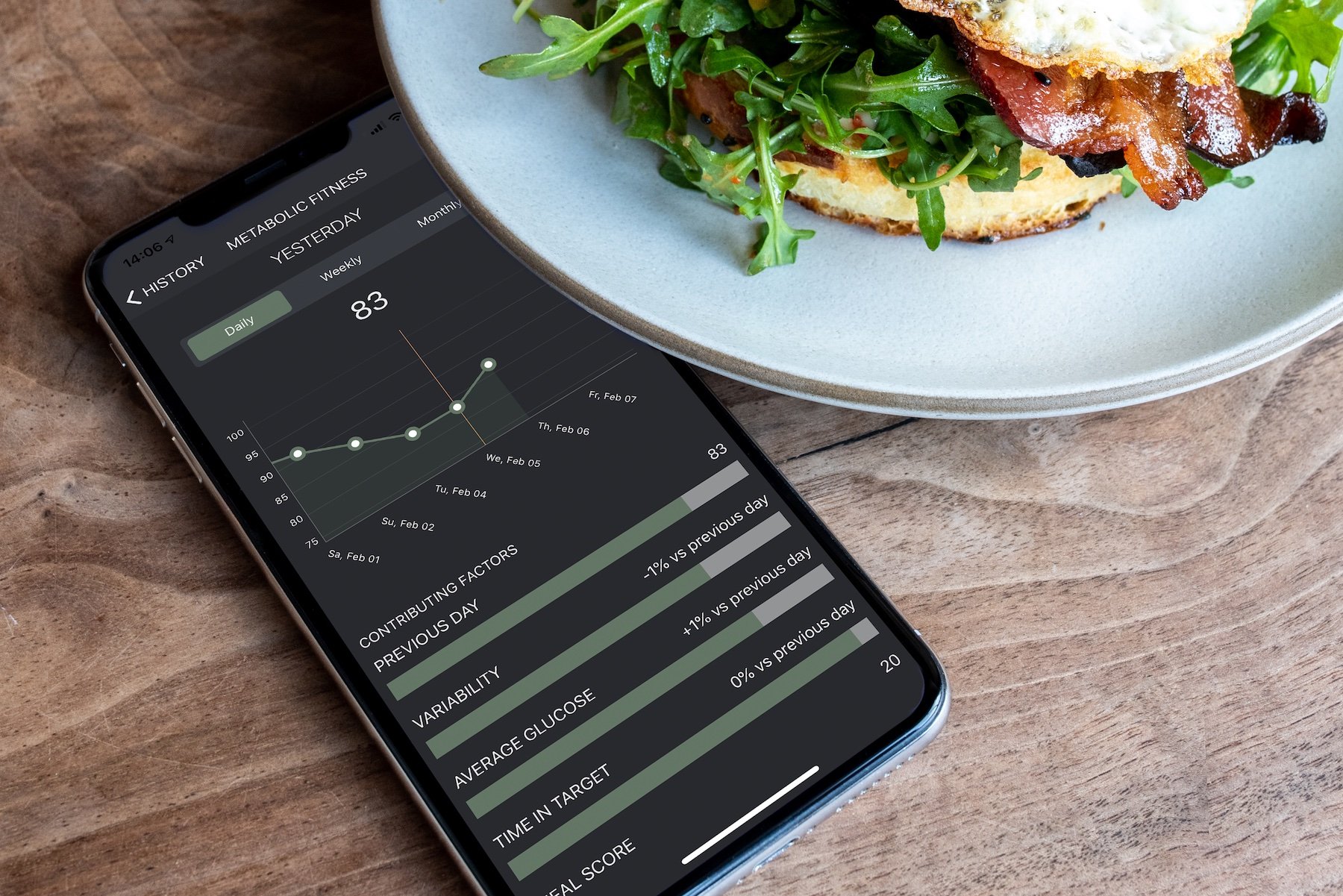Millions of Americans want to eat better and exercise more yet find it exceedingly difficult to make these changes and stick to them. Despite our best efforts, only 5% of Americans get the recommended amount of physical activity, 72% are overweight or obese, and 59% say that conflicting information about nutrition makes them doubt their food choices. As a society, we find it challenging to make healthy choices consistently. This is the code that needs cracking to modernize healthcare and improve health at scale.
It’s hard to choose healthy behaviors for several reasons, many of which are entrenched in our society. They include:
- Norms about nutrition and “comfort food”
- Relentless food marketing
- The addictive nature of ultra-processed food
- Culturally-reinforced taste preferences
- Complex psychological and social dynamics around food
- Limited access to healthy foods for many people
- Public policy that financially bolsters production and purchase of disease-promoting foods
- A culture that promotes sedentary behavior.
What’s more, we have healthcare and medical-education systems that still mainly emphasize reactionary sick-care over prevention and disease reversal.
The leading causes of illness and death in the United States are chronic diseases like heart disease, cerebrovascular disease, Alzheimer’s disease, diabetes, and infections. The commonality between these is that you are significantly more likely to develop and die from them if you have a poor diet and lifestyle. Even getting very sick from the flu is directly related to how we eat and live, as evidenced by people with diabetes being six times more likely to be hospitalized for influenza than nondiabetic people.
Meaningful behavior change in how we eat and live is at the center of reversing our chronic disease epidemic. But without effective tools, we will never dig ourselves out. Fighting chronic illnesses primarily with drugs and surgery is the wrong approach. If the goal is to improve poor diet and lifestyle at scale, we need tools to improve diet and lifestyle; drugs and surgery do not.
The vast majority of chronic diseases have strong associations with insulin resistance. In this condition, cells become less responsive to the hormone insulin, which helps cells take up glucose for energy. Spiking blood sugar repeatedly throughout your life will cause insulin resistance; minimizing blood sugar spikes reduces the risk of developing it and can even help reverse it.

What is insulin resistance? (with video)
When a cell loses its responsiveness to insulin, which can happen due to various conditions, it becomes insulin resistant.
Read the ArticleIt seems simple enough. But if it were that simple, how have we ended up with half the adult US population (and likely many more) having overt insulin resistance?
Epidemic levels of insulin resistance are the result of our changing diets, lifestyles, and toxic exposures over the past century. This condition of insulin resistance feeds into almost every symptom and condition you could imagine and contributes to:
- Obesity
- Alzheimer’s dementia
- Cardiovascular disease
- High blood pressure
- Cancer
- Chronic kidney disease
- Nonalcoholic fatty liver disease
- Depression
- Anxiety
- Stroke
- Peripheral vascular disease (and resultant amputations)
- Preventable blindness
- Dry eyes
- Infertility (PCOS)
- Erectile dysfunction
- Impaired immunity
- Gout
- Arthritis
- Chronic fatigue
- Chronic pain/fibromyalgia
- Gastric reflux
- Acne
- Skin tags
- Hidradenitis suppurativa
- Psoriasis
- Increased flu severity
- COVID-19 mortality
There is virtually no symptom or disease that is not touched by insulin resistance. Improving insulin sensitivity and metabolic fitness is an unequivocal and high-value way to reduce chronic disease risk and improve daily life.
Unfortunately, the American healthcare system has not yet figured out how to inspire people to adopt a diet and lifestyle that prevents and reverses metabolic dysfunction and insulin resistance.

What causes insulin resistance?
Insulin resistance is a shockingly common condition spurred on by diet and lifestyle. Here are the processes in your body that lead to this dangerous state.
Read the ArticleIt lacks the tools that tap into key features of sustainable behavior change. It hasn’t had the economic incentives to do so. A doctor or coach giving a patient general recommendations about what to eat or how to exercise is not a behavior change tool; it’s a conversation. And these conversations tend not to have their desired effect: Research shows that up to 40% of patients do not adhere to physician instructions for lifestyle changes, with the rate rising to 70% or more when the advice requires significant lifestyle modification or complex behavior change. Even with something as simple as taking a medication, 50% of patients do not follow their doctor’s orders. Top-down advice given in a typical healthcare setting does not work at scale to fundamentally improve peoples’ health.
Worse, many doctors aren’t even discussing lifestyle and diet with patients, despite unequivocal evidence that it improves chronic disease outcomes. Why? Many physicians get fewer than 10 hours of nutrition training in medical school, and insurance tends to reimburse poorly for extended counseling. The result is a medical culture where patients with clinical obesity receive dietary and lifestyle counseling by their primary care physician only about 30% of the time.
Simply put, our medical culture does not incentivize or achieve healthy behavior change at scale. This is costing lives.
We believe that effective behavior change stems from four factors:
- Closed-loop systems
- Body-awareness and interoception
- Accountability
- Personal control
1. Closed-Loop Systems
The concept of “closed-loop” and “open-loop” systems comes from control theory:
In open-loop control, the control action from the controller is independent of the “process output.”
In closed-loop control, the controller’s control action depends on feedback from the process in the form of the value of the process variable.
For example, nutrition is a notorious open-loop system, in which people lack a direct-feedback mechanism for how their diet affects their health. Many people describe diet as a “black box,” where they make choices based on what they’ve read, but they have no idea if it’s working.
The current feedback mechanisms for diet are all open-loop and include things like:
- DNA tests, in which you get a result along the lines of, “bananas are bad for you,” but it’s hard to connect that result to real outcomes after eating a banana.
- Food journaling, in which you write down what you eat and how you feel, sometimes reveals tenuous connections between cause and effect.
- Blood tests, in which your results are a multi-month (or multi-year) trailing indicator of your health. If your numbers are out of range, a doctor will say something like, “You should make better choices,” which lacks the specificity necessary to change behavior. Getting a yearly fasting glucose result of 101 mg/dL (early prediabetic range) does nothing to explain how you change your lifestyle to begin to lower it.
- Monitoring weight, which can be hard to interpret due to the dynamic influence of hormones, water, and inflammation.
In a closed-loop system, it’s possible to directly attribute action with consequence. This is not to say that other behavioral mechanisms that give real-time feedback (like gamification, streaks, or community support) are not useful. Still, they are not closed-loop systems, as they don’t engender definite attribution.
Continuous glucose monitoring (CGM) is the first tool we can use to measure real-time biomarkers and close the loop on diet and nutrition—a notoriously opaque and misleading market that leaves most people feeling helpless and confused.
Glucose is not a panacea for metabolic health. Still, it’s the single most important thing to track for the more than 80% percent of the population who exhibit signs of metabolic dysfunction and 50% with insulin resistance. It is also the only blood-based biomarker that can be monitored at home continuously without being initiated by the user. This makes it a great place to start.
When we consider the next steps for what we should focus on, we need to keep our thesis in mind. There’s no limit to the functionality we can add to a software product that leverages a glucose data stream, but many of these will be distractions from our thesis. For example, we could easily add genetic data into Levels, which would add value but would not close a loop and would likely not lead to behavior change.
Fitness, sleep, heart rate, and activity data, on the other hand, is real-time and can have an immediate and measurable impact on how somebody responds to a choice. That helps us move towards a more intelligent technology that can determine the “weight” of the impact of various decisions (e.g., sleep, exercise, stress) on overall glycemic control.
2. Interoception
One of the reasons closed-loop systems are compelling in this context is because they improve interoception (also known as “somatic awareness”), which is a person’s sense of the internal state of their body at a moment in time.
Having an awareness of signals originating within the body (i.e., a physical awareness of one’s heartbeat or respiratory patterns) is associated with better physical and mental health outcomes and increased motivation. Conditioning to improve interoception may be important in chronic pain, high blood pressure, gastrointestinal disorders, mood and anxiety disorders, addiction, and asthma.
Interestingly, training to improve interoception—such as structured heartbeat biofeedback that improves heartbeat discrimination capabilities—has significantly improved health outcomes. In short, it appears that becoming more sensitive to bodily workings through biofeedback—which can “close the loop” between internal processes and psychological state—is essential for well-being.
It’s common for people to feel tired, energized, angry, unmotivated, depressed, distracted, and a host of other states without understanding why they feel that way. When it comes to subjective mood states, it’s easy to misattribute causality because so many variables can affect how you feel: sleep, hydration, caffeine, exercise, stress, food intake, food timing … the list goes on.
It was precisely this type of misattribution error that led to the first lightbulb moment that Levels co-founder Sam Corcos had while using a CGM. On his second day using the CGM, after his regular healthy breakfast of steel-cut oats, he started to notice that his hands were shaky, and he felt tired and hungry.
He thought, “Oy… Well, I did have three cups of coffee this morning, and I didn’t sleep that well. This caffeine crash is getting out of control. I’m switching to tea starting tomorrow.” Then he checked his CGM and saw that his glucose levels had spiked to 215 mg/dL, and he was crashing down to 50 mg/dL. (For reference, people without diabetes rarely exceed 140 mg/dL.) He experienced severe hyperglycemia followed by reactive hypoglycemia and the symptoms that come with it, which he misattributed to coffee or sleep.
This is something he’d been doing his entire life, and this is the first time he had data to guide his decisions. He switched to eggs for breakfast and no longer experienced these symptoms. It was eye-opening for Sam, who had read dozens of books on nutrition and was actively trying to make healthy choices, yet was still doing things that made him feel bad throughout the day—not to mention negatively affecting his long-term health.
In the context of glucose and metabolism, we call this “metabolic awareness.” It’s a new intuition for most people to start to associate subjective feelings with specific choices, confirmed by data. When your heart is racing, and you feel warm, you might begin to recognize that as a symptom of hyperglycemia after eating something with a lot of sugar. Likewise, you can begin to connect your crashing energy levels and lack of focus with the carb-heavy lunch you had earlier and the subsequent hypoglycemic crash.
If we can close the loop by allowing people to specifically attribute how they feel to a decision they’ve made, we enable them to consciously improve their decision-making and change their subconscious decision-making processes.
We’ve found among our team and Levels members that glucose biofeedback removes many of the emotional or conscious elements of behavior change. With a closed loop between glucose and a negative sensation like fatigue or anxiety, and the attribution of the negative sensation to a specific choice (food, lack of sleep, etc.), people find diminished enjoyment in the trigger, making it inherently less desirable and easier to eliminate.
It’s hard to explain unless you’ve experienced it yourself, but when the loop is closed after making a particular dietary choice—especially if it’s associated with an adverse lifestyle event like feeling tired—you don’t need to make a conscious decision to change your behavior because your body makes the decision. It’s more akin to getting food poisoning, where you don’t consciously decide, “I’m not eating clams ever again,” because the decision is “made” for you. After food poisoning, the idea of clams is inherently no longer associated with pleasure or reward.
Glucose biofeedback has a similar impact, subtly nudging us towards more metabolically-friendly food choices by conditioning us with feedback that changes the reward equation. It also helps us understand with granularity how decisions relate to subjective experience, thereby potentially strengthening a novel form of interoception. It’s these improvements to interoception that we expect will make for potent and lasting behavior changes.
3. Accountability
One commonly understood mechanism of behavior change is the addition of an obligation that brings social pressure to adherence. Many organizations use this tactic successfully, including Alcoholics Anonymous (where you’re accountable to your peers in the group), Omada, and even hiring a personal trainer to force you to work out at a regular time.
Accountability also covers much of what gets labeled “gamification.” In our case, that would include features like “streaks” and other mechanisms that show longitudinal progress.
Another aspect of accountability might be better defined as competition. One of Fitbit’s breakout moments was introducing the ability to compete with your friends and family members to see who hit their goals and took the most steps. This encouraged adherence to goals through social pressure and built in a viral sales loop, where people would encourage their friends to purchase the product so they could compete. The nature of accountability within a competitive framework falls into the “autonomous accountability” category of the Self-Determination Theory, whereby people pursue accountability from a foundation of internal motivation to execute a desired behavior.
4. Control
Finally, an additional feature of behavior change captured by the Levels product is increased control. Recent research shows that in 2018, 80% of consumers found conflicting information about food and nutrition, and 59% say that the contradictory information makes them doubt their choices. Individuals face seemingly endless food marketing claims, competing popular nutritional ideologies, and dietary recommendations from different medical governing bodies. This can create a counterproductive environment rooted in the “paradox” or “tyranny” of choice. In this model, individuals with too many choices have decreased motivation, less satisfaction with choices, and decision-related anxiety and regret.
We believe that the objective data stream generated by glucose monitoring makes the myriad daily choices drastically simpler and allows individuals to execute better choices with increased control. For example, knowing that oatmeal spikes glucose to 180 mg/dL virtually eliminates this as a healthy option. This is now no longer a food choice. Knowing that taking a 20-minute walk before eating a banana reduces a subsequent glucose spike makes walking a clear positive choice. Objective data that CGM provides can engender a unique and renewed sense of objective control, which impacts behavior-change motivation. Research suggests that “perceived control is associated with emotional well-being, reduced physiological impact of stressors, enhanced ability to cope with stress, improved performance, and a greater likelihood of making difficult behavior changes.”
Conclusion
We need successful behavior change at scale to solve the metabolic health crisis. If hundreds of millions of Americans do not make consistent daily choices to eat and live in a way that minimizes glucose variability, we will continue to see epidemic rates of insulin resistance and related chronic disease. Drugs and surgery cannot be the lifeline thrown to everyone; they are more often a band-aid that does not reverse the dysfunctional physiology that causes disease.
We refer to drugs and surgery in medicine as “tertiary prevention,” meaning preventing complications if someone has already developed a disease. If we’ve learned anything about chronic lifestyle-related diseases, it is that we need better solutions than waiting till someone is in florid diabetic ketoacidosis (a severe manifestation of uncontrolled diabetes) to begin proper treatment. Our long-term goal is to enable primary prevention: prevention before someone has overt disease. If people are to avoid diabetes, they have to have tools to monitor disease drivers well before they develop into full-blown pathology.
The conventional top-down approach to healthcare advice, coupled with a bias towards drug and surgical interventions, will not meaningfully improve human health, resilience, longevity, or happiness. Advice does not inspire sustained behavior changes at scale, and drugs and surgery manage downstream symptoms and manifestations of disease but do not typically reverse or prevent disease. What’s more, a physician or coach cannot be with a patient 24 hours a day, inspiring and informing choices. Yet, this is what we need because disease results from the hundreds of choices we make daily.
Digital health technology can take on the chronic disease epidemic in a radically different way. We’re fortunate that glucose monitoring tools exist to make this sustainable positive behavior change a reality for anyone who wants to optimize their health and prevent future disease. By focusing on aspects of behavior change, digital health technology can promote progress in ways that the traditional practice of medicine cannot.









